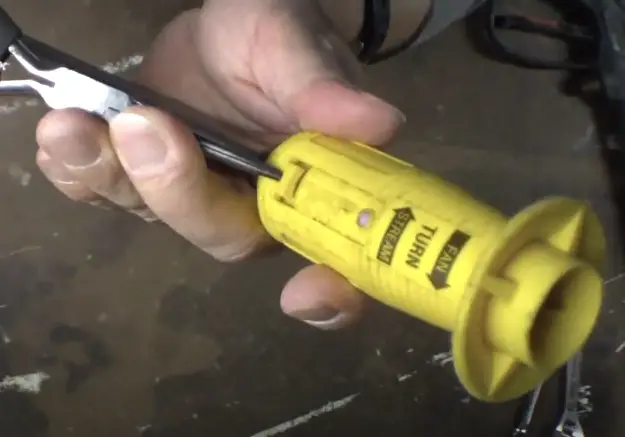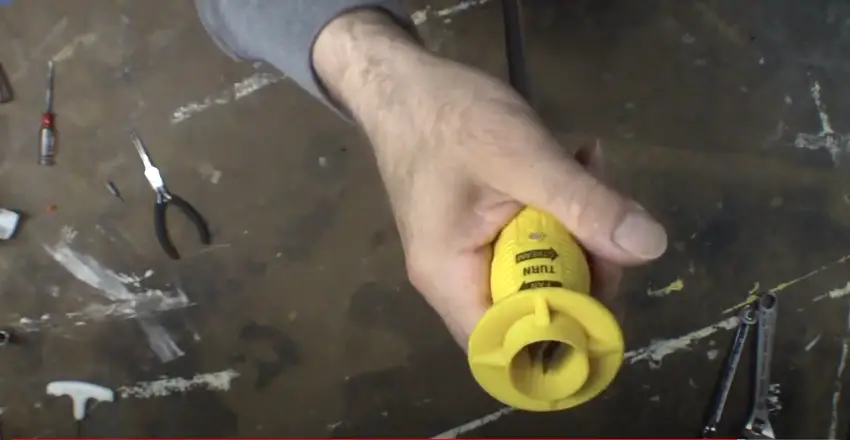The performance of your pressure washer is dependent on a lot of things like the pump, motor, hose, and unloader valve.
But when you start noticing a drop in pressure while using your washer, it is most likely that you have a clogged nozzle. A clogged nozzle – whether partially or fully clogged – can lead to a drastic drop in water pressure coming out of the nozzle.
If this is the case, then you are in luck. Fixing a clogged nozzle is a very simple task that won’t require you to call a professional or spend extra fees. All you have to do is to follow the simple steps below and you should have your pressure washer back in a good shape in no time.
Causes of Clogging in Pressure Washer Nozzles
Low–Quality Water
In this case, low-quality water doesn’t only refer to water with debris but also water with mineral deposits. If your water is filled with mineral deposits, they will eventually build up in your nozzle and clog it.
If you’re using water directly from your water supply for your cleaning needs, you may need to clean your nozzle as often as you can. You can switch to a better water source to save you the stress of constant maintenance.
Detergent/Soap
Just as with mineral deposits building up around the holes of your nozzles, the detergent or soap you use in your pressure washer can also clog your nozzle. It can also cause the nozzle to corrode faster, leading to wear and tear.
In some cases, you may only need to change the type of detergent or soap you are using in your pressure washer. In other cases, you will have to stop using it altogether.
Wear and Tear
A clogged nozzle could occur due to the wear and tear of the internal components of your washer. This wear and tear may be as a result of using the wrong detergent or lack of maintenance
Breading/Caking
This happens when worn-out materials build up on the sides of the nozzles and lead to clogging. Caking or breading is caused by several factors but it is most likely due to the evaporation of hot liquid.
Related: The Best Time to Buy Your Pressure Washer (Revealed
Pressure Washer Nozzle Cleaning Tools
Before learning how you can unclog the nozzle of your pressure washer, have in mind that you need to get the right cleaning tools. You need either a cleaner wire or paper clip (unfolded) to carry out the procedure. These tools should help you out with a little effort and save you cash on a replacement.
How to Unclog a Pressure Washer Nozzle

Follow the steps below to unclog your pressure washer as soon as you’ve equipped yourself with the tools.
- Remove the nozzle: Start by removing the spray wand from the pressure washer
- Free the holes of debris: Poke the holes of the nozzle with a paper clip or a cleaner wire in a back and forth motion. This should free the holes of any debris
- Rinse the nozzle: You can place the nozzle under running water with the nozzle head in the opposite direction. This will help to flush out any remaining debris in the nozzle
- Fix back the nozzle: Wash the nozzle until all the debris is removed. After that, reinstall it in your pressure washer and test to see if the water pressure is back to normal
If you notice that the water pressure is still the same, check the nozzle to see if there is still any debris blocking the holes. If not, then check other parts of your pressure washer to identify the cause of the low pressure.
Related: Top 10 Places to Buy Pressure Washers
Common Problems That Affect Water Pressure in a Pressure Washer
While a clogged nozzle would likely be the cause of low water pressure in your pressure washer, it is not the only culprit to consider. Low performance can also be caused when there’s a problem with any of the following parts.
Unloader Valve
The unloader valve diverts the flow of water into the bypass when the nozzle is not in use. Adjusting the unloader valve can increase or decrease the water pressure.
If you notice a steady loss of pressure and you can’t find any problem with the nozzle or hose, check the unloader valve. You can get the right pressure you need by adjusting the unloader valve. But only do this in small increments to avoid pressure from building too much.
Always attach a pressure gauge to the unloader valve when adjusting it to monitor the changes in pressure. The exact adjustment process of the unloader valve will depend on the type (whether it is pressure-actuated or flow-actuated). Ensure that your pressure washer is running and your spray wand pulled when making adjustments.
If adjusting the unloader valve doesn’t solve the problem, then you may need to service or replace the valve.
Nozzle
A worn-out nozzle can also cause low water pressure. Your pressure washer nozzle may wear out due to constant use or corrosion caused by the cleaning detergent flowing through the unit.
Another thing that could cause your nozzle to wear out is heat damage from hot water. Avoid using hot water if you’re not using a hot water pressure washer as it is not resistant to hot temperatures and is more likely to get damaged.
When your nozzle wears out, the holes in them widen over time. And water will be able to flow through freely, leading to a drop in pressure. In this case, you have to replace the spray wand or nozzle.
Another thing to check is if you are using the right nozzle. Pressure washer nozzles come in varying degrees, each with its pressure rating and use.
A 0-degree nozzle would deliver the highest pressure while that of 15 degrees is perfect for stripping paint off surfaces. You can also find 25-degree and 40-degree nozzles for cleaning swimming pools, roofs, cars, and windows. Always check to ensure that you are using the right nozzle for your cleaning needs.
Hose

Another likely culprit of low water pressure in pressure washers is the hose. The hose supplies water into the machine; it must do so at a certain rate for the pressure washer to operate normally. This is usually at 4L per minute.
Blockages in the hose, debris in the inlet filter, and the size of your hose are factors that can affect water flow into the washer. If you notice a drop in water pressure and you don’t have a clogged nozzle, you may need to check your hose.
Pressure Regulator

You may find a pressure regulator in the place of an unloader valve, depending on your pressure washer. Although they both control the pressure of water in the machine, they function differently.
Regardless, you would have to simply adjust the pressure regulator to get the water pressure back to normal. The pressure regulator may need to be changed if nothing changes when you make the adjustments.
Related: Step by Step Guide to the Change Oil in Your Pressure Washer Pump
Pressure Washer Maintenance Tips
Proper maintenance of your washer will save you a lot of stress from fixing and servicing its parts. It will also reduce the likelihood of problems like clogged nozzles happening. Follow the pressure washer maintenance tips below to get the best of your machine. These tips will not only prolong the lifespan of your device but also ensure that it gives you the best performance every time you use it.
Flush After Every Use
Your pressure washer pump and motor are the most vital parts and the most expensive to replace. Any damage to these parts will lead to poor performance. Damage could come from high pressure generated inside the pump, however, it is most likely due to corrosion caused by water.
Leaving water in the pump after use may cause the parts of the motor and pump to rust. To prevent this from happening, flush out any water in the pump after every use. You need a pump lube/antifreeze to do this.
Using the built-in hose, attach the pump lube to the inlet port and press the trigger. Stop when water or foam shoots out of the pump.
Check the O-rings

Your washer is fitted with numerous O-rings that ensure that your pump is watertight. These rings eventually become flattened and unable to channel water properly, which could lead to leaks. Always perform a routine check of your O-rings and replace the degraded ones immediately.
Use the Right Detergent
This is pretty much obvious. Only use the detergent designed for pressure washers. Heavy-duty cleaning fluids can damage your pump, nozzle, and other parts of your washer.
Use the Right Nozzle
Pressure washers come with the following nozzles: 00, 150, 250, and 400. The 0-degree nozzle is best for cleaning the toughest stains while the 40-degree nozzle is best for washing delicate surfaces and everyday cleaning.
Related
- Best Time to Buy a Pressure Washer (Revealed)
- Ryobi Vs Craftsman Pressure Washers
- Best Pressure Washers Under $600
- How Does a Pressure Washer Unloader Valve Work? (Answered)
- Ryobi Vs Generac Pressure Washer (In-depth Reviews)
- Pressure Washing Pros and Cons
- Karcher Vs Ryobi Pressure Washers (Comparison)
- 10 Best Places to Buy Pressure Washers
- Ryobi Vs Simpson Pressure Washers (Final Verdict)
- How to the Change Oil in Your Pressure Washer Pump
- Simpson Vs Craftsman Pressure Washers (Detailed Review)
- Karcher Vs Greenworks Pressure Washer Review

